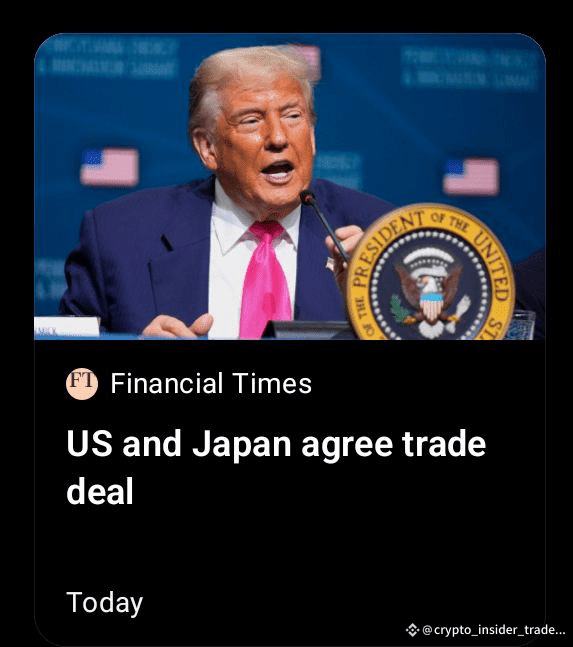Tariff Reset: U.S. cuts proposed 25% tariff on Japanese imports (including autos) to 15% reciprocal tariff
Massive Investment: Japan pledges up to $550 billion in loans and guarantees for U.S. investment; Trump claims 90% profit sharing to the U.S.
Market Access Gains: Japan to open its market further—especially for U.S. cars, trucks, rice, and other agricultural goods
Remaining Frictions: Steel & aluminum tariffs remain unchanged at 50%; other policy details and terms are still being formalized
---
📊 What’s in It for Each Side?
🇺🇸 United States
Industries Benefiting: U.S. automotive and agriculture sectors gain expanded access to one of the world’s largest economies.
Jobs & Investment: Trump claims hundreds of thousands of U.S. jobs will be created through Japanese investment .
Tariff Strategy Shift: This deal signals a new “flat tariff” approach, moving away from Trump’s earlier sector-specific or punitive tariffs .
🇯🇵 Japan
Export Relief: Automakers such as Toyota, Honda, Subaru, and Mazda saw a 10–17% stock surge following the news .
Growth Support: The deal helps soften the blow from earlier threatened tariffs that could have slashed GDP by ~1% .
Political Gamble: Japanese PM Ishiba, following recent electoral strain, says this represents the best possible outcome—despite domestic resentment around agricultural fairness .
---
🌍 Market & Macro Impact
Stocks Surge:
Japanese Nikkei +3–3.8%; Topix +3.1–3.5%
U.S. equity futures also saw modest gains in reaction
Currency Outlook: Yen strengthened slightly, though analysts warn volatility may return depending on follow-through .
Analyst View: Many welcomed reduced trade risk—though economists caution details matter and some emphasize pending domestic farming opposition .
---
🧩 Remaining Questions
1. Implementation Timeline & Terms: Key provisions remain unconfirmed—when will the agreement be formalized and what are the enforcement mechanisms?
2. Agricultural Impact: Expansion of U.S. rice, but how broad will agricultural sector access become?
3. Industrial Fairness: U.S. automakers argue this may disadvantage North American-made vehicles under NA trade rules .
4. Political Friction: Domestic backlash is brewing in both countries—Japan over farm protection, U.S. over possible unfair competition.
---
📌 Why It Matters for Crypto Traders & Investors
Macro Volatility Relief: Reduced global trade tension may foster a more stable investment environment—potentially supporting risk assets including crypto.
Tech & Infrastructure Potential: Japan’s planned allocation into semiconductors, AI, critical minerals, and energy may drive innovation—key catalysts for blockchain and crypto ecosystems.
Geopolitical Ripple Effect: The deal may embolden similar US–partner trade frameworks (Indonesia, UK, EU), reshaping global supply chains and capital flows—crypto markets often climb on such positive reshuffling.
---
✅ Final Take
This is a landmark trade deal—perhaps the largest by scale—with 15% reciprocal tariffs as a strategic middle ground. Japan secures market access and investment incentives, while the U.S. gains job growth promises and sectoral leverage. Though steel and aluminum exclusions limit its scope, equities and currencies reacted positively. The devil is in the details: execution, domestic political dynamics, and broader trade diplomacy will determine the lasting impact.
